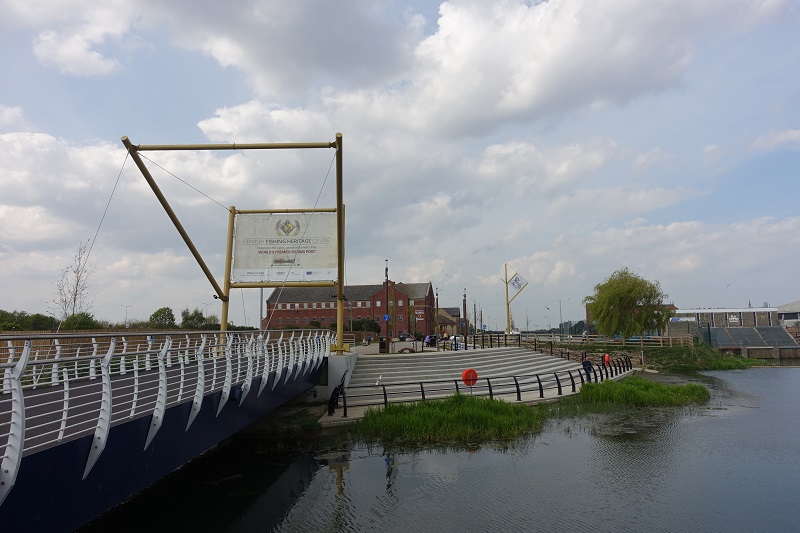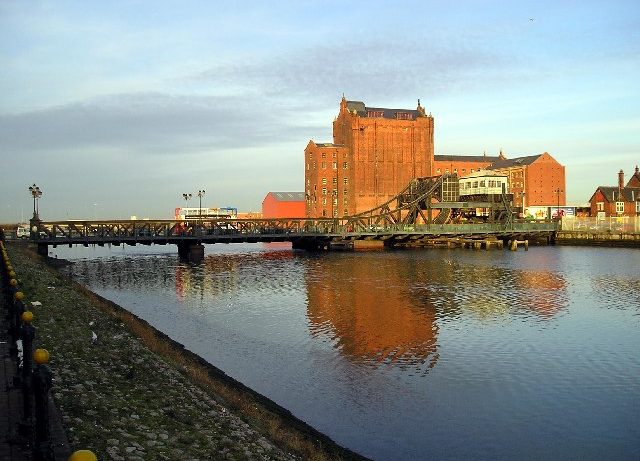Grimsby isn’t one of the top tourist places people think about when making a trip to the UK, but it’s a thriving port town that’s worth a visit. It has been populated since the 9th century and has Viking roots. The town also has ties back to the Second World War. Over the centuries, it’s been an industrious town, and is still the top place for food processing in the UK.
Background of Grimsby
Grimsby is listed in the Domesday Book from 1086. It was registered as containing a mill, a ferry, and having a population of around 200 people. In the medieval era, it was a busy fishing and trading port of high importance to the Crown. However, it didn’t last. In the 15th century, the River Humber was no longer capable of taking big ships because of a rise in silt. Fishing and trading in Grimsby decreased.
Finally, in the 18th century, they started dredging The Haven (the area of the River Humber that had become too shallow with silt). The port of Grimsby was widened and enlarged. Suddenly, it was booming again, becoming a top importer of iron, timber, wheat, and hemp. They built new docks to handle the increase in trading.
In 1848 rail travel came to Grimsby and with it more opportunity. Coal mined in Yorkshire was exported out of the country through Grimsby ports and rail links extended down to London. This boom in industry and employment continued until the Great Depression.
Grimsby’s Role in the Second World War
Grimsby held the largest base for minesweeper trawlers, who had the important job of patrolling the North Sea for mines. Crews comprised of ex-trawlermen and Royal Navy Reserve and volunteers. It was a highly dangerous job, and the Patrol Service lost the most vessels than any other branch of the Royal Navy during the war. 2385 men died.
Information about the town’s role as a large base of Royal Navy vessels made it back to enemy lines. In June 1943 Grimsby found itself under attack from the Luftwaffe. They dropped 6000 incendiary bombs and over 3000 Butterfly bombs in the area which saw the death of 99 people. Air raids in Grimsby during World War Two killed almost 200 people and seriously injured almost 200 more.
Industry
In the 1950s, Grimsby was one of the busiest fishing ports in the world. However, because of legislation with the EU and Iceland, this industry declined. In the 1970s, there were up to 400 trawlers coming in and out of the port related to fishing, but by 2013, this had reduced to only five.
After the decline of the fishing, Grimsby continued to cement itself as one of the primary points for food processing in the UK. 70% of fish processing is carried out in Grimsby, as well as many other frozen and chilled foods. Over 500 food-related companies operate out of the town.
Nowadays, Grimsby is developing itself as a renewable energy hub. It’s the top producer of solar, wind, and biomass energy in England, and is close in proximity to the largest cluster of offshore wind farms in Europe. This industry brings plenty of employment to the area.

If you’re looking for something to do in Grimsby, you could visit the Grimsby Fishing Heritage Centre. A museum that lives on a recreated steam trawler, paying homage to the town’s industrious past. Or you could go to the Time Trap Museum, which takes you through the history of Grimsby’s development. It’s in the former police cells at Grimsby Town Hall and offers lots of fun nooks and crannies to explore. A real hidden gem!

